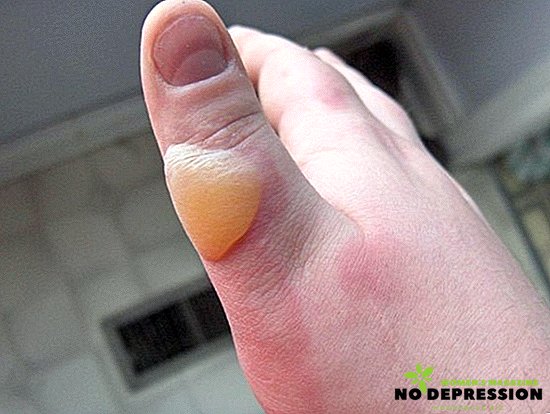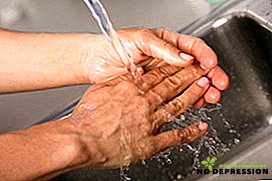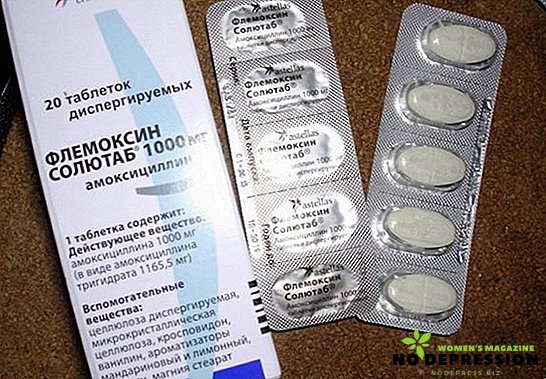Burn - tissue damage as a result of exposure to high temperature chemicals. When they are received, it is important to know how to provide first urgent aid, and you need to proceed to the measures immediately, because such damage can cause serious consequences.

How to help the victim of thermal burn
Thermal burns appear in case of exposure to high temperature skin. Its sources can be:
- hot object;
- open flame;
- hot water;
- hot steam.
The following degrees of thermal burns are distinguished:
- The first. The affected area of skin reddens, swells. The injured person experiences pain and burning. Symptoms are observed during the first 2-3 days, after which they disappear.
- The second. Redness and swelling of the skin, small blisters.
- Third. Tissues are affected to the muscles, bones, while the bubbles already burst, scabs form.
- The fourth. The burn encompasses the whole body, tissue necrosis occurs. There is a risk of death.
To provide first aid, for example, if a burn appeared on the skin from boiling water, it is necessary to carry out measures that are aimed simultaneously at both relieving pain and preventing infection:
 First, calm the victim, this will prevent panic attack. Move the person to a shade or a cool room.
First, calm the victim, this will prevent panic attack. Move the person to a shade or a cool room.- Keep the damaged area of skin for 10-15 minutes under cool clear water. This will improve blood circulation, will not allow the site to increase in size. The main thing is not to use ice, as this can lead to the opposite effect.
- Apply any suitable anti-burn agent to the damaged skin, for example, Panthenol, put a dry, clean dressing on top.
- Constantly give a person a drink: clean water, tea, cool compote.
- If a person is tortured with pain, he should be given any pain reliever, for example, Analgin.
It should be noted that in case of severe burns, it is necessary to give a person first aid and take the victim to the hospital or call an ambulance. Remember that even a small thermal injury without proper treatment can cause serious complications.
Further treatment is carried out comprehensively and is aimed at:
- pain relief;
- hypoxia treatment;
- replenishment of blood deficiency, if necessary;
- fight against intoxication.
But the following actions can not be carried out:
- blistering;
- glue the damaged part with a plaster;
- process the wound with cotton wool - you can only use a sterile bandage or gauze;
- touch the wound with dirty hands;
- use traditional medicine (for example, sour cream, butter, etc.).
What to do with chemical burns
A chemical burn is a tissue damage that is obtained by exposure to acids, salts of heavy metals, alkalis, and other chemical components. Most often, such burns are obtained in case of non-compliance with safety regulations, in case of domestic accidents, and injuries at work.
There are the following degrees of chemical burns:
- The first. In this case, only the upper layer is affected. The main manifestations include a slight swelling and redness of the skin.
- The second. In this case, the lesion affects both the upper layer of the skin and its deep layers. Appear puffiness, redness, small blisters.
- Third. The layers of the skin around the subcutaneous fat tissue are affected. Characteristic manifestations: large blisters with a clear liquid, blood inside. In addition, sensitivity may be lost.
- The fourth. A burn affects all tissues, including muscles and tendons.
In case of chemical burns, an important nuance is that the tissue can continue to break down even after removing the chemical component that caused the damage.
Therefore, in the first few hours after injury, it is very difficult to determine the degree of chemical burn - an exact diagnosis can be carried out no earlier than after 7 days.
For first aid, you must first rinse the chemicals from the skin. And it is better to hold the damaged limb under water for at least 10-15 minutes.

If it was not possible to immediately rinse the liquid with water, then the subsequent rinsing should take at least half an hour. It is impossible to use cotton swabs moistened with water for disposal, since this will only increase the penetration of the chemical component.
After washing the affected skin, you must proceed to neutralize the chemical components that act on the skin. If we are talking about acid, then you need to use soapy water or a solution of baking soda (for its preparation, take 1 tsp soda and dissolve in 450 ml of water).
For alkaline burns, use a weak solution of citric acid. If the burn was obtained by exposure to lime, you need to use a 2% sugar solution, and carbolic acid is neutralized with glycerol and lime milk.
To reduce the pain, you should attach a damp cold towel to the affected area, then use a free gauze bandage.
First aid is very important, but there are cases where you just can not do without qualified help:
- with the appearance of shock in the affected person, for example, when the skin turns pale or nausea, loss of consciousness;
- if the burn area exceeds 7 cm;
- with the defeat of the deeper layers of the skin;
- if the chemical lesion has touched the groin, the area of the buttocks, large joints, esophagus;
- when the victim has severe pain that cannot be eliminated with painkillers.
Provide first aid for frostbite
In medicine, frostbite means the destruction of tissues under the influence of cold. Frostbite has a lot in common with burns: they are very difficult to distinguish by visual inspection.
Before finding out what methods of first aid exist, it is necessary to become more familiar with the frequently encountered symptoms:
- The skin is red or blue. Moreover, with direct exposure to cold, the skin becomes white, but after that the damaged area becomes bright red. If the color does not change, it indicates a violation of the circulatory system.
- The appearance of blisters. Bubbles can have different sizes and contents, but most often the blisters are filled with a clear liquid, sometimes with blood.
- Loss or decrease in sensitivity. This symptom appears when nerve endings are damaged.
It is very important to provide first aid. When detecting a site of frostbite, you need to follow this algorithm:
- Warm up with dry heat, for example, Put a person in a warm room, near a heating device.
- Remove all clothes and change a person in warm clothes.
- If possible, place the victim in a warm bath, gradually raising the water temperature from +30 to +40 degrees.
- Gently massage the affected areas of the skin, which will resume the broken work of the blood vessels.
- Give a person a warm drink. When the inhibited state can be given about 50 ml of strong alcohol.
- Put on the damaged area insulating bandage for 12-15 hours. It’s not easy to do: put on the skin two dry layers of cotton wool, gauze, cover with foil and a warm cloth.
The following actions are prohibited for frostbite skin:
- rubbing with snow - it will not only damage the skin, but may also infect the wound;
- injure the damaged area, which can quickly lead to the appearance of purulent complications;
- to warm a person very quickly, it can only worsen his condition.


 First, calm the victim, this will prevent panic attack. Move the person to a shade or a cool room.
First, calm the victim, this will prevent panic attack. Move the person to a shade or a cool room.









